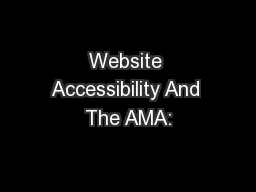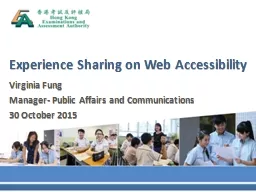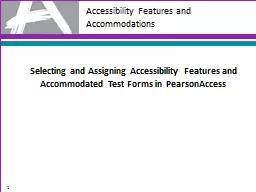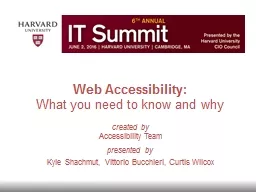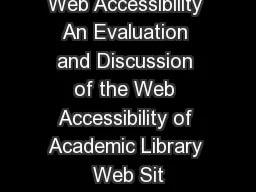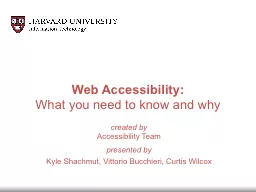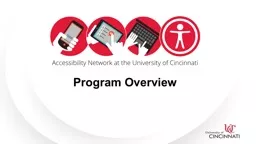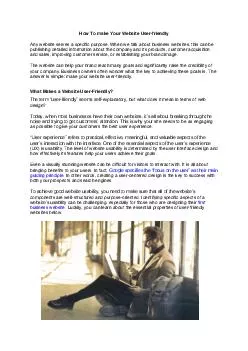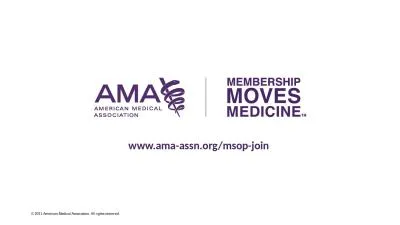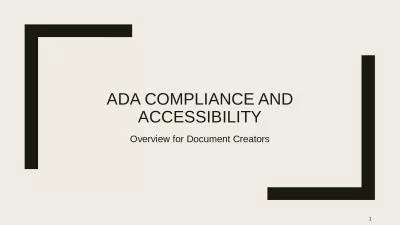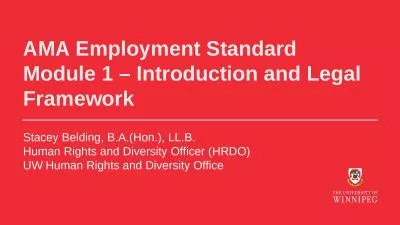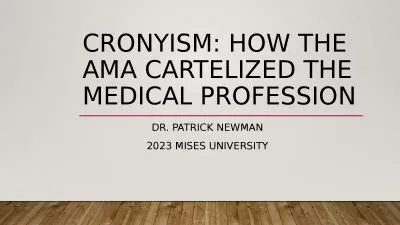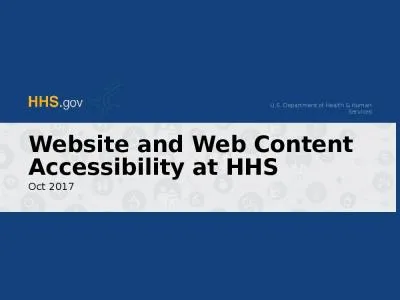PPT-Website Accessibility And The AMA:
Author : myesha-ticknor | Published Date : 2018-01-17
Where to Start DIO Advancing Accessibility Plans Event June 1 2016 Lisa Snider Everything Accessibility What Is My Background About Me My Past I have been an accessibility
Presentation Embed Code
Download Presentation
Download Presentation The PPT/PDF document "Website Accessibility And The AMA:" is the property of its rightful owner. Permission is granted to download and print the materials on this website for personal, non-commercial use only, and to display it on your personal computer provided you do not modify the materials and that you retain all copyright notices contained in the materials. By downloading content from our website, you accept the terms of this agreement.
Website Accessibility And The AMA:: Transcript
Download Rules Of Document
"Website Accessibility And The AMA:"The content belongs to its owner. You may download and print it for personal use, without modification, and keep all copyright notices. By downloading, you agree to these terms.
Related Documents

